It looks like you're using an Ad Blocker.
Please white-list or disable AboveTopSecret.com in your ad-blocking tool.
Thank you.
Some features of ATS will be disabled while you continue to use an ad-blocker.
share:
a reply to: primalfractal
The language of Western Anatolia was Indo-European from the earliest known dates, and that extended into the Balkans and above the Black sea, the Hittites may have been such a group when they re-entered Anatolia but they replaced the earlier Central Anatolian Hattic culture.
Hattic and Uralic
Sumerian Uralic substrates.
The only possible reason that the Hattic and Minoan and Sumerian languages could relate to Finnish is that groups had been forced to migrate South to Anatolia during the last ice age, there were marked cultural differences between these groups and the Indo-European particularly Matriarchal tendencies.
Sage tradition was common to both groups but the Indo-European appear to have connected that more with the North and Ursa Major whereas the Sumerians connected this more with the South and Aquarius/Piscis Austrinusm perhaps the Minoans with the West and Taurus/Pleiades, there were also the Caucasian language group to the East in Anatolia, but these traditions all emerge from the same conceptual frame-work.
Classic Sanskrit is certainly a highly developed sacred language from the early Vedic Indo-Aryan but i would consider all the languages of the early Neolithic having archaic forms, languages tended to develop in conjunction with culture and civilization as required, the highest civilizations producing the most refined linguistic forms.
It can't really be known which language group was in the Gobekli Tepe region at the onset of the Neolithic but generally it was well placed to connect the main three language groups in terms of their historic era disposition.
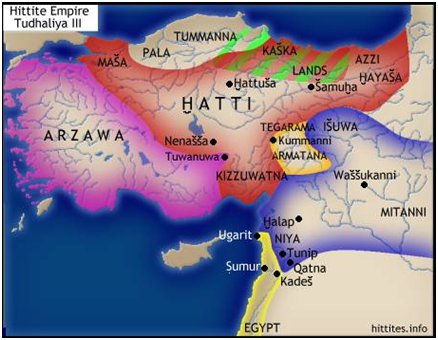
a reply to: AstroStar
Why do you prefer the Sirius/Orion option, it's generally just used to sell Graham Hancok books?
I know the general interest there was in those asterisms and the associated mythology but that was in the context of extensive star lore, fringe authors over stated their importance in terms of that must have been were the Aliens came from, which mythology doesn't support.
The language of Western Anatolia was Indo-European from the earliest known dates, and that extended into the Balkans and above the Black sea, the Hittites may have been such a group when they re-entered Anatolia but they replaced the earlier Central Anatolian Hattic culture.
The heartland of the oldest attested language of Anatolia, before the arrival of Hittite-speakers, ranged from Hattusa, then called "Hattus", northward to Nerik. Other cities mentioned in Hattic include Tuhumiyara and Tissaruliya. Hittite-speakers conquered Hattus from Kanesh to its south in the 18th century BC. They eventually absorbed or replaced the Hattic-speakers
Hattic and Uralic
Sumerian Uralic substrates.
The only possible reason that the Hattic and Minoan and Sumerian languages could relate to Finnish is that groups had been forced to migrate South to Anatolia during the last ice age, there were marked cultural differences between these groups and the Indo-European particularly Matriarchal tendencies.
Sage tradition was common to both groups but the Indo-European appear to have connected that more with the North and Ursa Major whereas the Sumerians connected this more with the South and Aquarius/Piscis Austrinusm perhaps the Minoans with the West and Taurus/Pleiades, there were also the Caucasian language group to the East in Anatolia, but these traditions all emerge from the same conceptual frame-work.
Classic Sanskrit is certainly a highly developed sacred language from the early Vedic Indo-Aryan but i would consider all the languages of the early Neolithic having archaic forms, languages tended to develop in conjunction with culture and civilization as required, the highest civilizations producing the most refined linguistic forms.
It can't really be known which language group was in the Gobekli Tepe region at the onset of the Neolithic but generally it was well placed to connect the main three language groups in terms of their historic era disposition.

a reply to: AstroStar
Why do you prefer the Sirius/Orion option, it's generally just used to sell Graham Hancok books?
I know the general interest there was in those asterisms and the associated mythology but that was in the context of extensive star lore, fringe authors over stated their importance in terms of that must have been were the Aliens came from, which mythology doesn't support.
edit on
7-1-2022 by Madrusa because: (no reason given)
a reply to: Madrusa
Hi Madrusa,
Today, Sirius can be seen almost worldwide as the brightest star in the sky – excluding the sun – and the fourth brightest night-sky object after the moon, Venus and Jupiter. Sirius is so noticeable that its rising and setting was used as the basis for the ancient Egyptian calendar, says Magli. At the latitude of Göbekli Tepe, Sirius would have been below the horizon until around 9300 BC, when it would have suddenly popped into view.
I have never mentioned Aliens only myths and legends of stars, many calendars started off aligned to Sirius and Belt of Orion, i generally do my own research using astronomy programs.
Hi Madrusa,
Today, Sirius can be seen almost worldwide as the brightest star in the sky – excluding the sun – and the fourth brightest night-sky object after the moon, Venus and Jupiter. Sirius is so noticeable that its rising and setting was used as the basis for the ancient Egyptian calendar, says Magli. At the latitude of Göbekli Tepe, Sirius would have been below the horizon until around 9300 BC, when it would have suddenly popped into view.
I have never mentioned Aliens only myths and legends of stars, many calendars started off aligned to Sirius and Belt of Orion, i generally do my own research using astronomy programs.
a reply to: AstroStar
Hello AstroStar, the Egyptian calandar began and ended with the Summer solstice, a lot of alignments you are suggesting for Sirius and Orion are considered solstice and equinox alignments, and those asterisms are not on the ecliptic plane and thus will never be at a solstice or equinox point, Magli made a reasonable case for Gobekli Tepe aligning to the rising point of Sirius but there are other possibilities within those parameters including Centaurus which later Megalithic sites are considered possibly aligned towards.
It also obviously isn't the case that only one star rises at a particular point on the horizon, the Sumerians noted an entire arc across the Southern skies rising at the same point, from the Pegasus square to Canis Major following through Orion, this linear axiom they related to the Palm tree of Enki, when Pegasus was setting then Sirius was rising and visa versa.
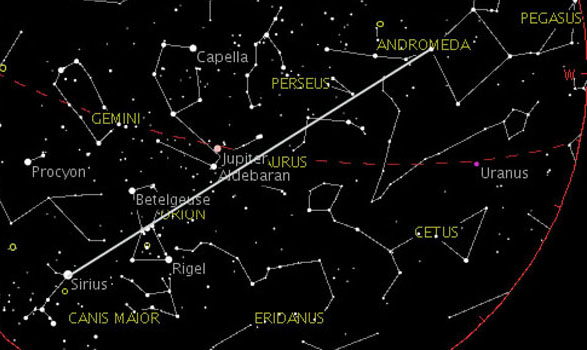
This is how they represented that axiom which is based in the Pegasus square and extends to Sirius.
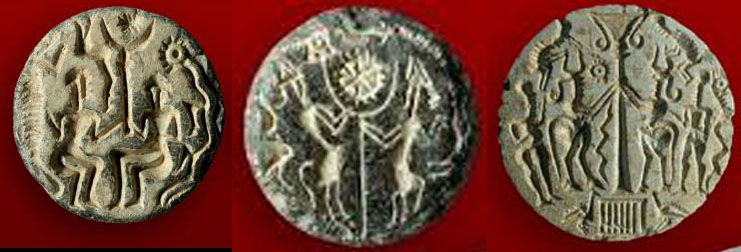
The constellations along the axiom related to the developmental stages of living creatures, from the humble sea serpent to the stag Andromeda, the Panther Perseus and the Bull Taurus, Orion as a Turtle and Canis Major was represented by the spider Goddess Uttu.
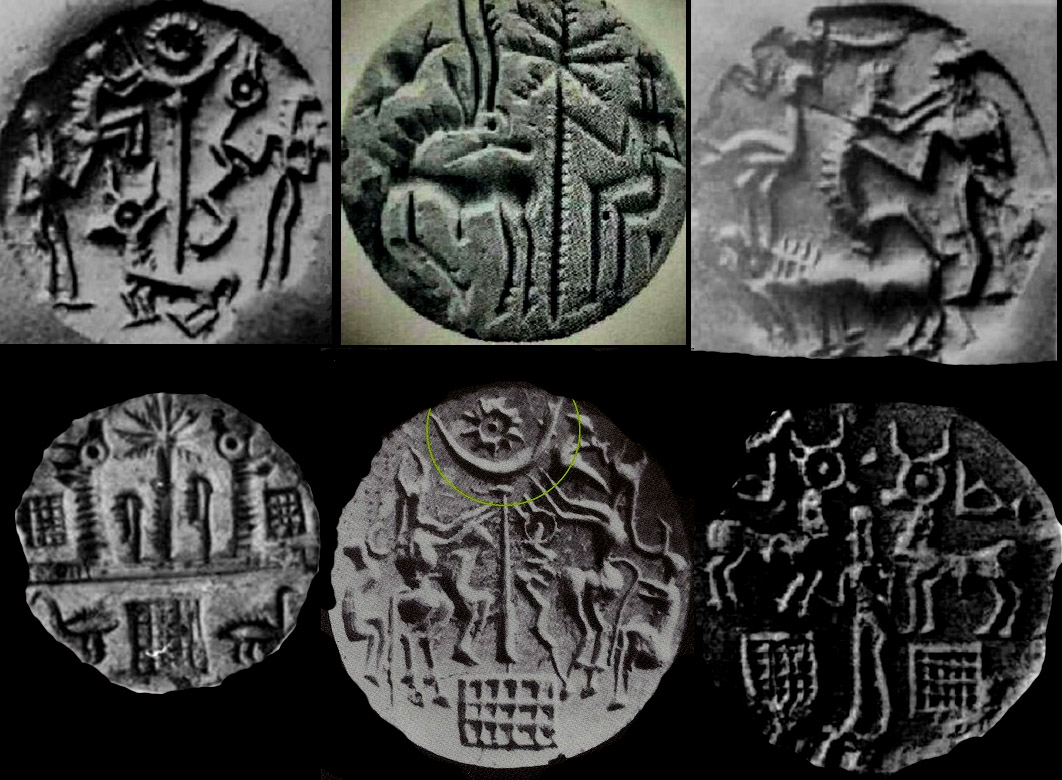
Sirius and Orion then only had meaning within the greater symbolic context, it wasn't a Sirius mystery as such though that was the brightest star at the top of the tree, it was more of an Enki and the Turtle people mystery.
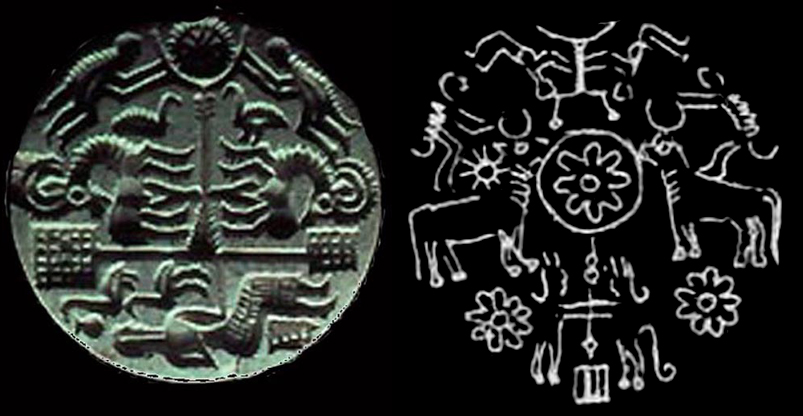
It can also be noted they tended to mirror this iconography thus representing the Pegasus square in the East and the West, they were also representing the living creatures as having the illuminated eye of conciousness including the sea serpent even though it related to development from plant and water.
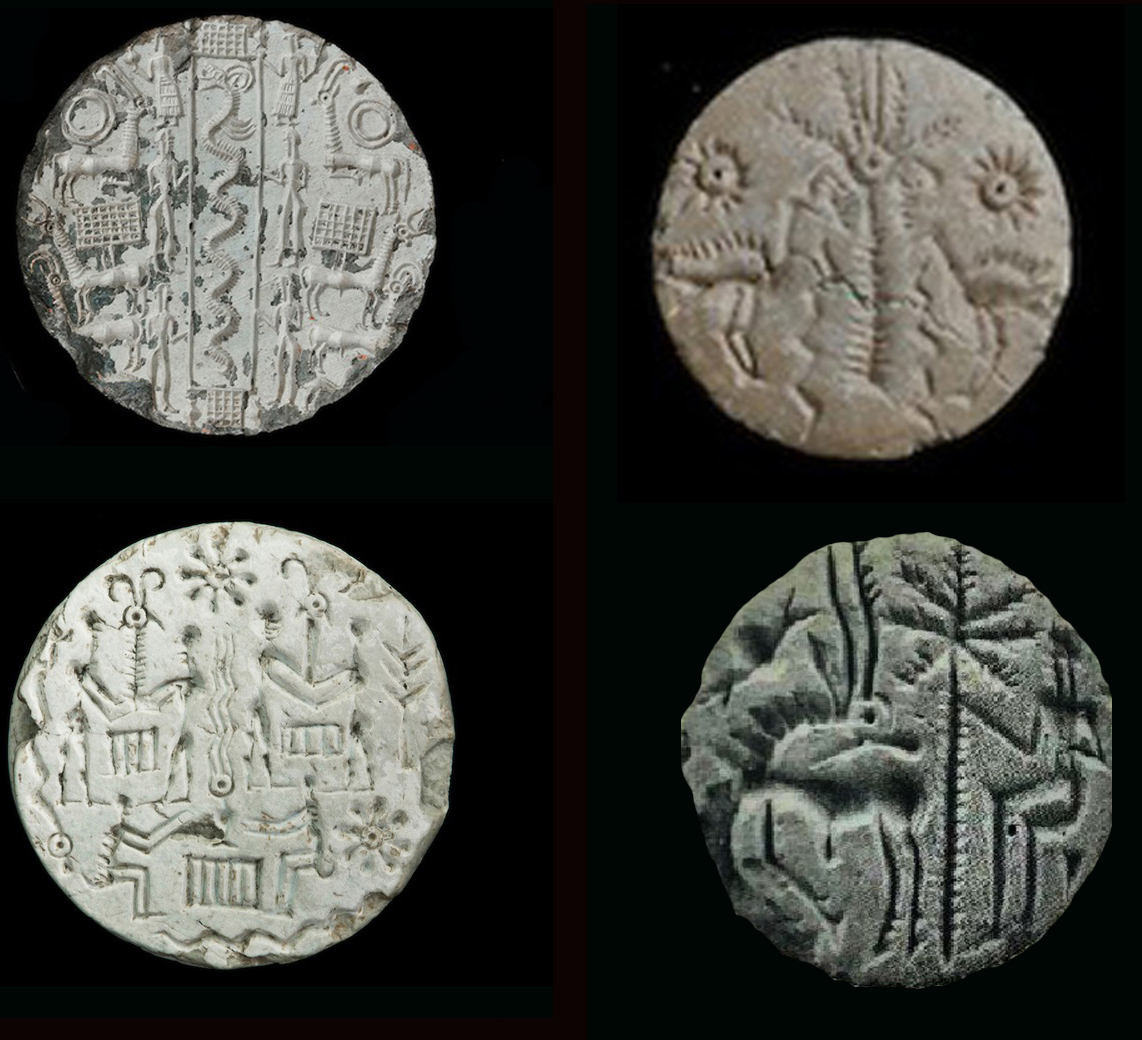
Hello AstroStar, the Egyptian calandar began and ended with the Summer solstice, a lot of alignments you are suggesting for Sirius and Orion are considered solstice and equinox alignments, and those asterisms are not on the ecliptic plane and thus will never be at a solstice or equinox point, Magli made a reasonable case for Gobekli Tepe aligning to the rising point of Sirius but there are other possibilities within those parameters including Centaurus which later Megalithic sites are considered possibly aligned towards.
It also obviously isn't the case that only one star rises at a particular point on the horizon, the Sumerians noted an entire arc across the Southern skies rising at the same point, from the Pegasus square to Canis Major following through Orion, this linear axiom they related to the Palm tree of Enki, when Pegasus was setting then Sirius was rising and visa versa.

This is how they represented that axiom which is based in the Pegasus square and extends to Sirius.

The constellations along the axiom related to the developmental stages of living creatures, from the humble sea serpent to the stag Andromeda, the Panther Perseus and the Bull Taurus, Orion as a Turtle and Canis Major was represented by the spider Goddess Uttu.

Sirius and Orion then only had meaning within the greater symbolic context, it wasn't a Sirius mystery as such though that was the brightest star at the top of the tree, it was more of an Enki and the Turtle people mystery.

It can also be noted they tended to mirror this iconography thus representing the Pegasus square in the East and the West, they were also representing the living creatures as having the illuminated eye of conciousness including the sea serpent even though it related to development from plant and water.

edit on 8-1-2022 by Madrusa because: (no reason given)
a reply to: Madrusa

The reconstructions of Proto Indo-European are quite thought provoking, a wistful sense of almost being comprehensible but not quite, as the root of so many languages, English included, I guess it's natural to almost grasp some of it. Brings to mind images of hunters and herders on the Anatolian steppe, women collecting herbs, dispersing seeds, and gathering grains, the coming together for ceremony in Neolithic finery, on star written days.
Liked Proto Indo-European Gandalf 😀
From the Neolithic back, Archaeological finds of Goddess figurines are at a ratio of 10 to 1 compared to male deities. Anatolia has yielded quite a few, including some double headed ones, its speculated they represent the Goddess and her mate.

The reconstructions of Proto Indo-European are quite thought provoking, a wistful sense of almost being comprehensible but not quite, as the root of so many languages, English included, I guess it's natural to almost grasp some of it. Brings to mind images of hunters and herders on the Anatolian steppe, women collecting herbs, dispersing seeds, and gathering grains, the coming together for ceremony in Neolithic finery, on star written days.
Liked Proto Indo-European Gandalf 😀
The Proto-Indo
European pantheon includes a number of securely reconstructed deities, since they are both cognates – linguistic siblings from a common origin –, and associated with similar attributes and body of myths: such as *Dyḗws Ph₂tḗr, the daylight-sky god; his consort *Dʰéǵʰōm, the earth mother; his daughter *H₂éwsōs, the dawn goddess; his sons the Divine Twins; and *Seh₂ul, a solar goddess. Some deities, like the weather god *Perkʷunos or the herding-god *Péh₂usōn,[note 2] are only attested in a limited number of traditions
From the Neolithic back, Archaeological finds of Goddess figurines are at a ratio of 10 to 1 compared to male deities. Anatolia has yielded quite a few, including some double headed ones, its speculated they represent the Goddess and her mate.
The goddess Ishtar of Uruk, though traced back to an early period and undergoing various transformations, was not... peculiar to that place. A similar deity, symbolising the earth as the source of vegetation—a womb wherein seed is laid,—must have been worshipped in other centres, where the sun-cult prevailed. So, as has already been intimated, the consort of the old solar deity Ninib represents this great female principle. Their union finds a striking expression in a myth which represents the pair, Ninib and Gula (or Bau), celebrating a formal marriage ceremony on the New Year’s day (coincident with the vernal equinox),
edit on 8-1-2022 by primalfractal because: (no reason given)
originally posted by: Granitebones
This place and Gobeckli Tepe could well be the Genesis (No pun intended) of the Eden and expulsion narrative.
This is a great observation and would explain a lot.
a reply to: Madrusa
Hi Madrusa,
Your quote:-
"Hello AstroStar, the Egyptian calandar began and ended with the Summer solstice, a lot of alignments you are suggesting for Sirius and Orion are considered solstice and equinox alignments, and those asterisms are not on the ecliptic plane and thus will never be at a solstice or equinox point, Magli made a reasonable case for Gobekli Tepe aligning to the rising point of Sirius but there are other possibilities within those parameters including Centaurus which later Megalithic sites are considered possibly aligned towards."
I agree there are other possibilities, after all Gobekli Tepe hasn't had much excavation yet, and so much more is to come, i don't agree with the Sothic Cycle that has had criticism:-
en.wikipedia.org...
On the dates mentioned it is hard to find the point Sirius was viewed from:-
files.abovetopsecret.com...
files.abovetopsecret.com...
files.abovetopsecret.com...
files.abovetopsecret.com...
The legend is that the Egyptian Calendar did use Sirius but is difficult to prove.
I agree all other possibilities need to be investigated with what stars if any, the astronomers at Gobekli Tepe were looking at, but Sirius is in the mix until more investigation proves otherwise.
Hi Madrusa,
Your quote:-
"Hello AstroStar, the Egyptian calandar began and ended with the Summer solstice, a lot of alignments you are suggesting for Sirius and Orion are considered solstice and equinox alignments, and those asterisms are not on the ecliptic plane and thus will never be at a solstice or equinox point, Magli made a reasonable case for Gobekli Tepe aligning to the rising point of Sirius but there are other possibilities within those parameters including Centaurus which later Megalithic sites are considered possibly aligned towards."
I agree there are other possibilities, after all Gobekli Tepe hasn't had much excavation yet, and so much more is to come, i don't agree with the Sothic Cycle that has had criticism:-
en.wikipedia.org...
On the dates mentioned it is hard to find the point Sirius was viewed from:-
files.abovetopsecret.com...
files.abovetopsecret.com...
files.abovetopsecret.com...
files.abovetopsecret.com...
The legend is that the Egyptian Calendar did use Sirius but is difficult to prove.
I agree all other possibilities need to be investigated with what stars if any, the astronomers at Gobekli Tepe were looking at, but Sirius is in the mix until more investigation proves otherwise.
originally posted by: Madrusa
a reply to: AstroStar
Hello AstroStar, the Egyptian calandar began and ended with the Summer solstice,
It began on 1 Akhet each year, which is around September 10 and is related to the rising of Sirius. The calendar ends after the 30th day of Mesori AND the five intercalary days.
a reply to: Byrd
Hi Byrd,
The Coptic Calendar was nearly the same as the Egyptian calendar and was introduce in Egypt around 2,000 years ago, but has differences to stop slide and errors, mainly the date of New Year is on 11th September, one out of four years, is 10th September.
At the end of this century the date of New Year will change.
en.wikipedia.org...
Hi Byrd,
The Coptic Calendar was nearly the same as the Egyptian calendar and was introduce in Egypt around 2,000 years ago, but has differences to stop slide and errors, mainly the date of New Year is on 11th September, one out of four years, is 10th September.
At the end of this century the date of New Year will change.
en.wikipedia.org...
a reply to: AstroStar
a reply to: Byrd
At the begining of Dynastic Egypt Sirius was rising in conjunction with the Summer solstice but the problem in taking that as a marker as Egypt discovered is precessional shift and it's not a good idea to be dragging your calendar along with it, though they did because of the tradition that had been established, this is why aligning with solstice and equinox points is more reliable than stars.

a reply to: Byrd
At the begining of Dynastic Egypt Sirius was rising in conjunction with the Summer solstice but the problem in taking that as a marker as Egypt discovered is precessional shift and it's not a good idea to be dragging your calendar along with it, though they did because of the tradition that had been established, this is why aligning with solstice and equinox points is more reliable than stars.

edit on 11-1-2022 by Madrusa because: (no reason given)
a reply to: Madrusa
Most dating of events in Egypt by Archaeology has been done by the Sothic Cycle, which has had criticism that i agree with:-
conservapedia.com...
Most dating of events in Egypt by Archaeology has been done by the Sothic Cycle, which has had criticism that i agree with:-
conservapedia.com...
originally posted by: Madrusa
a reply to: AstroStar
a reply to: Byrd
At the begining of Dynastic Egypt Sirius was rising in conjunction with the Summer solstice but the problem in taking that as a marker as Egypt discovered is precessional shift and it's not a good idea to be dragging your calendar along with it, though they did because of the tradition that had been established, this is why aligning with solstice and equinox points is more reliable than stars.
Something's way off there. The summer solstice is in June. Not July. Sirius rises in July, not June.
a reply to: Byrd
It's complicated, 21st July correlated then to the 181st day of the year, ie the Summer solstice, if i use stellar software for 3500 BC location Alexandria 21st July is were the Sun is at it's Northernmost rising point/Summer solstice and the Heliacal rising of Sirius is evident.
We can also note the Sun was rising in Leo during the Old Kingdom at the Summer solstice.

a reply to: AstroStar
It is problematic but i think in origin it was associated with the Summer solstice and i suppose it intrigued them how that tended to drift.
It's complicated, 21st July correlated then to the 181st day of the year, ie the Summer solstice, if i use stellar software for 3500 BC location Alexandria 21st July is were the Sun is at it's Northernmost rising point/Summer solstice and the Heliacal rising of Sirius is evident.
For example, an account that Sothis rose on III Peret 1—the 181st day of the year—should show that somewhere 720, 721, 722, or 723 years have passed since the last apocatastasis.Following such a scheme, the record of Sirius rising on II Shemu 1 in 239 BC implies apocatastases on 1319 and 2779 BC ±3 years. Censorinus's placement of an apocatastasis on 21 July AD 139 permitted the calculation of its predecessors to 1322, 2782, and 4242 BC
We can also note the Sun was rising in Leo during the Old Kingdom at the Summer solstice.

a reply to: AstroStar
It is problematic but i think in origin it was associated with the Summer solstice and i suppose it intrigued them how that tended to drift.
edit on 12-1-2022 by Madrusa because: (no reason given)
a reply to: Byrd
Hi Byrd,
Madrusa is right with the Summer Solstice in 3500 BC, astronomy programs have to be adjusted as before 1582 when the Gregorian Calendar started they use the Julian Calendar which has errors and need adjustments, to bring the Vernal Equinox back in line they had to take ten days out, as it was falling on 10/11 March 1581 AD
They took days out up to the First Council of Nicaea in 325 but they didn't go back to 0045 BC when the Julian Calender started when the Winter Solstice was on 25th December!
"And the equinoxes and solstices–
The winter solstice was December 25
The vernal equinox, March 25
The summer solstice, June 24
The autumnal equinox, September 24"
www.deilataylor.com...
Going back before 0045 BC is before the Julian Calendar started and is called Proleptic:-
en.wikipedia.org...
I study the almost steady alignment of Sirius regarding the Julian Calendar, please note for a easy factor i have used just the Earth's curve in Rome, this is a Cosmic Alignment and is too near Earths curve to be seen, look how much Regulus and Leo moves with the two pictures below, but Sirius is within a degree of the Earth's curve with the Sun, please forgive my writing as i have a broken spinal cord and i have trouble operating my hands.
The movement of Sirius within the Julian Calendar is nearly the same as Axial Precession.
files.abovetopsecret.com...
files.abovetopsecret.com...
In Gobekli Tepe the time is even longer, in fact it is huge within two degrees.
I think in Turkey they knew the year was 365 days long if they added another day every 4 years is a matter of speculation by viewing Sirius, it would have been a steady observation if they had done this. The excavations in Turkey are just starting, i am hoping for more information in time.
Hi Madrusa,
As you know Boncuklu Tarla is older than Gobekli Tepe, i have found a horizon that you can use on Stellarium for location, you may have it but hope it helps:-
www.standingstones.org...
Hi Byrd,
Madrusa is right with the Summer Solstice in 3500 BC, astronomy programs have to be adjusted as before 1582 when the Gregorian Calendar started they use the Julian Calendar which has errors and need adjustments, to bring the Vernal Equinox back in line they had to take ten days out, as it was falling on 10/11 March 1581 AD
They took days out up to the First Council of Nicaea in 325 but they didn't go back to 0045 BC when the Julian Calender started when the Winter Solstice was on 25th December!
"And the equinoxes and solstices–
The winter solstice was December 25
The vernal equinox, March 25
The summer solstice, June 24
The autumnal equinox, September 24"
www.deilataylor.com...
Going back before 0045 BC is before the Julian Calendar started and is called Proleptic:-
en.wikipedia.org...
I study the almost steady alignment of Sirius regarding the Julian Calendar, please note for a easy factor i have used just the Earth's curve in Rome, this is a Cosmic Alignment and is too near Earths curve to be seen, look how much Regulus and Leo moves with the two pictures below, but Sirius is within a degree of the Earth's curve with the Sun, please forgive my writing as i have a broken spinal cord and i have trouble operating my hands.
The movement of Sirius within the Julian Calendar is nearly the same as Axial Precession.
files.abovetopsecret.com...
files.abovetopsecret.com...
In Gobekli Tepe the time is even longer, in fact it is huge within two degrees.
I think in Turkey they knew the year was 365 days long if they added another day every 4 years is a matter of speculation by viewing Sirius, it would have been a steady observation if they had done this. The excavations in Turkey are just starting, i am hoping for more information in time.
Hi Madrusa,
As you know Boncuklu Tarla is older than Gobekli Tepe, i have found a horizon that you can use on Stellarium for location, you may have it but hope it helps:-
www.standingstones.org...
edit on AM5431Thu, 13 Jan 2022 05:11:54 -06002022th31amThu, 13 Jan 2022 05:11:54 -0600 by AstroStar because: Adding info
a reply to: AstroStar
The Celestial mechanics involved are that when Leo was in conjunction with the Summer Solstice that correlated with the ecliptic plane at it's Northernmost point, when Leo was rising at the Spring Equinox three Zodiac ages previous that involved no visible rising point for Sirius, optimum rising points are toward the North and relative to axial tilt Orion and Sirius were at their lowest/Southernmost rising points 13,000 years ago.
Now that Sirius and Orion are at their Northernmost rising points they can easily be seen when the Sun is now rising in Leo at the Autumn equinox. It was possible to observe Sirius rising close to due South some 11,000 years ago from Anatolia, the earliest possible date for Sanliurfa around 9,200 BCE though the practicality of that might be argued against.
If i go South to Aswan though even 13,000 years ago at the Spring equinox borderline Virgo into Leo then the Heliacal rising of Sirius was occuring.

The Celestial mechanics involved are that when Leo was in conjunction with the Summer Solstice that correlated with the ecliptic plane at it's Northernmost point, when Leo was rising at the Spring Equinox three Zodiac ages previous that involved no visible rising point for Sirius, optimum rising points are toward the North and relative to axial tilt Orion and Sirius were at their lowest/Southernmost rising points 13,000 years ago.
Now that Sirius and Orion are at their Northernmost rising points they can easily be seen when the Sun is now rising in Leo at the Autumn equinox. It was possible to observe Sirius rising close to due South some 11,000 years ago from Anatolia, the earliest possible date for Sanliurfa around 9,200 BCE though the practicality of that might be argued against.
If i go South to Aswan though even 13,000 years ago at the Spring equinox borderline Virgo into Leo then the Heliacal rising of Sirius was occuring.

edit on 13-1-2022 by Madrusa because: (no reason given)
a reply to: Madrusa
Hi Madrusa,
Using 1st January 0045 BC being the start of the Julian Calendar, there may be an aliignment by ancient Greek day marker in Aswan being previous sunset as Sirius rose:-
www.dropbox.com...
They may not been able to see it but the Greeks had been in Egypt for several centuries and could have used astrological measures that used the curve of the Earth.
Parans for short were the earliest form of astrology belief, and are far older than 13th Century BC.
pubmed.ncbi.nlm.nih.gov...
Hi Madrusa,
Using 1st January 0045 BC being the start of the Julian Calendar, there may be an aliignment by ancient Greek day marker in Aswan being previous sunset as Sirius rose:-
www.dropbox.com...
They may not been able to see it but the Greeks had been in Egypt for several centuries and could have used astrological measures that used the curve of the Earth.
Parans for short were the earliest form of astrology belief, and are far older than 13th Century BC.
pubmed.ncbi.nlm.nih.gov...
Interesting youtube video below regarding Maltese Temple's, it is interesting from approx. 48 minutes:-
www.youtube.com...
www.youtube.com...
a reply to: AstroStar
It is interesting, there are those who suggest the most Southerly of those rising point alignment clusters as relating to Alpha Centauri because if related to Sirius they'd have to go back 11,000+ years to be rising and setting so close to due South and the most Northerly rising points would be well into the historic period for Sirius, but Malta was a very early expansion from the core Neolithic region so i wouldn't rule anything out but you're talking very extensive time periods for all those South-Easterly alignments to relate to Sirius.
Malta Temples
Giulio Magli who suggested a Sirius alignment for Gobekli Tepe considers Alpha Centauri for Malta, but there are also the alignments which could relate to Sirius.
Precessional effects in Astronomy
It is interesting, there are those who suggest the most Southerly of those rising point alignment clusters as relating to Alpha Centauri because if related to Sirius they'd have to go back 11,000+ years to be rising and setting so close to due South and the most Northerly rising points would be well into the historic period for Sirius, but Malta was a very early expansion from the core Neolithic region so i wouldn't rule anything out but you're talking very extensive time periods for all those South-Easterly alignments to relate to Sirius.
The setting of the stars of Centaurus allows a plausible interpretation of the orientations of the rows of Ordona and Mandriglia. The possible significance of such stars for the prehistoric populations of the Mediterranean basin was already pointed out in the past. Hoskin (2001) discussed the
prehistoric sanctuaries of Malta (Ggantija temples, about 3500 BCE), Menorca (taula sanctuaries,about 1000 BCE) and the impressive case of the Son Mas sanctuary (about 2000 BCE) of Mallorca.
Malta Temples
Giulio Magli who suggested a Sirius alignment for Gobekli Tepe considers Alpha Centauri for Malta, but there are also the alignments which could relate to Sirius.
The two temples of Ggantjia correspond to two subsequent phases and the second one is oriented further south with respect to the first. Both exhibit a solar orientation in the left altar, which is oriented to winter solstice sunrise (Albrecht 2001) and both exhibit a stellar orientation in the main axis, which is oriented towards the rising of the asterism composed by the South Cross and the two bright stars of Centaurus
Precessional effects in Astronomy
edit on 14-1-2022 by Madrusa because: (no
reason given)
a reply to: Madrusa
Hi Madrusa,
Thank you for your reply, I'm very interested in your interpretation of picture on the top right of link:-
files.abovetopsecret.com...
If you are right that it is the illuminated eye of consciousness, then in one form or another, it has been around for 10,000 years at least, obviously the meaning changes through the ages but there is debate that it is related to the "Eye of Providence":-
en.wikipedia.org...
Hi Madrusa,
Thank you for your reply, I'm very interested in your interpretation of picture on the top right of link:-
files.abovetopsecret.com...
If you are right that it is the illuminated eye of consciousness, then in one form or another, it has been around for 10,000 years at least, obviously the meaning changes through the ages but there is debate that it is related to the "Eye of Providence":-
en.wikipedia.org...
new topics
-
Only two Navy destroyers currently operational as fleet size hits record low
Military Projects: 4 hours ago -
George Stephanopoulos and ABC agree to pay $15 million to settle Trump defamation suit
Mainstream News: 9 hours ago
top topics
-
George Stephanopoulos and ABC agree to pay $15 million to settle Trump defamation suit
Mainstream News: 9 hours ago, 17 flags -
Light from Space Might Be Travelling Instantaneously
Space Exploration: 17 hours ago, 9 flags -
More Bad News for Labour and Rachel Reeves Stole Christmas from Working Families
Regional Politics: 15 hours ago, 8 flags -
Only two Navy destroyers currently operational as fleet size hits record low
Military Projects: 4 hours ago, 7 flags
active topics
-
-@TH3WH17ERABB17- -Q- ---TIME TO SHOW THE WORLD--- -Part- --44--
Dissecting Disinformation • 3687 • : angelchemuel -
The Mystery Drones and Government Lies
Political Conspiracies • 72 • : tarantulabite1 -
Only two Navy destroyers currently operational as fleet size hits record low
Military Projects • 1 • : alwaysbeenhere2 -
A priest who sexually assaulted a sleeping man on a train has been jailed for 16 months.
Social Issues and Civil Unrest • 30 • : alwaysbeenhere2 -
They Know
Aliens and UFOs • 86 • : ianmoone3 -
George Stephanopoulos and ABC agree to pay $15 million to settle Trump defamation suit
Mainstream News • 11 • : WeMustCare -
President-Elect DONALD TRUMP's 2nd-Term Administration Takes Shape.
Political Ideology • 331 • : WeMustCare -
Nov 2024 - Former President Barack Hussein Obama Has Lost His Aura.
US Political Madness • 15 • : WeMustCare -
Former DNI-Congressman John Ratcliffe says the U.S. Government is Intimidated by UFOs.
Aliens and UFOs • 41 • : WeMustCare -
One out of every 20 Canadians Dies by Euthanasia
Medical Issues & Conspiracies • 23 • : Daughter2v2
